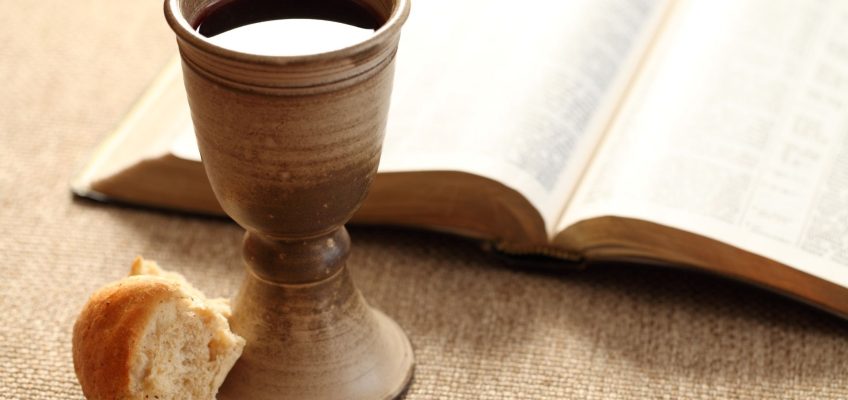The Liturgy of the Eucharist stands at the very heart of Catholic worship, encapsulating the essence of the Christian faith. This sacred rite, celebrated during the Mass, is regarded as a profound encounter with the divine. It manifests not merely through its ritualistic components but also through the deep theological implications it embodies. Understanding the Liturgy of the Eucharist requires an exploration of its structure, significance, historical context, and ongoing relevance in the life of the Church and its faithful.
At its core, the Liturgy of the Eucharist revolves around the consecration of bread and wine, which Catholics believe become the actual Body and Blood of Christ. This transformation, known as transubstantiation, is pivotal. It manifests the belief that Jesus instituted this sacrament during the Last Supper, commanding His disciples to “do this in remembrance of me.” This directive underscores the Eucharist’s essential role in the life of the Church and its members, symbolizing not merely a ritual act but a perpetual invitation to communion with Christ.
The structure of the Liturgy of the Eucharist is methodical yet rich with spiritual significance. It can be broken down into several key parts: the presentation of gifts, the Eucharistic Prayer, and the Communion rite. Each segment intricately weaves together themes of thanksgiving, sacrifice, and communion. The presentation of gifts involves the offering of bread and wine, substances that represent the fruits of human labor. These humble elements, elevated during the Mass, underline the Church’s teaching that all of creation is called to participate in the divine mystery.
The Eucharistic Prayer is the pinnacle of this liturgical celebration. It encompasses multiple components, including the Preface, the Sanctus, the Epiclesis, and the Institution Narrative. Through these prayers, the priest invokes the Holy Spirit to transform the elements into the Body and Blood of Christ, establishing a direct connection between the worshiping community and the heavenly realities. The act of remembering Christ’s passion, death, and resurrection imbues the Liturgy with a sense of continuity—the past, present, and future converge in this sacred moment.
One might sense a peculiar fascination with the Liturgy of the Eucharist, as it draws individuals from varied backgrounds and traditions into a shared encounter with the divine. This common observation highlights not only a sacramental act but also an inexplicable yearning for connection. Therein lies a deeper reason for this fascination: the Eucharist serves as a tangible relationship with the divine, offering solace, rejuvenation, and the promise of eternal life. It represents a continuous outpouring of grace into the world, allowing believers to experience the love of Christ in an intimate manner.
Another layer to this fascination is the historical evolution of the Eucharistic celebration. Tracing back to the early Christian communities, we witness a gradual development from simple agape meals to a more structured liturgy influenced by Jewish worship practices. The early Christians gathered to break bread and share in fellowship, seeing these meals as a means to deepen their unity and faith. The Liturgy of the Eucharist, as we know it today, represents both continuity and change—a living tradition that has adapted while remaining grounded in the foundational truths of the faith.
Moreover, the Eucharist is doctrinally significant and serves as a unifying force in the Church. The Roman Catholic Church asserts that the Eucharist is the “source and summit” of Christian life, establishing it as the central act of worship. Through this sacrament, Catholics affirm their identity and unity in faith. It transcends cultural and linguistic barriers, thus ensuring that believers around the globe can partake in this divine mystery. In a world often marked by division, the Eucharist serves as a powerful antidote, promoting a sense of belonging to the Body of Christ.
Furthermore, the Liturgy of the Eucharist invites reflection on the themes of sacrifice and redemption. In continually re-presenting Christ’s sacrifice, the Church affirms the belief in salvific grace. This aspect of the liturgy challenges the faithful to contemplate their own lives, urging them to respond to God’s love with acts of charity and justice. Thus, participation in the Eucharist is not merely a personal spiritual experience; it also compels believers to engage actively with the world around them, echoing Christ’s call to love and serve others.
In contemporary society, the Liturgy of the Eucharist also faces various challenges, including secularization and individualism. As cultural trends shift, keeping the significance of the Eucharist at the forefront of worship can be difficult. Yet, amid these challenges lies an opportunity for renewal. By engaging with the Eucharist’s richness and depth, the Church can inspire believers to rekindle their faith and understanding, ensuring that this sacrament continues to resonate in the hearts of generations to come.
In conclusion, the Liturgy of the Eucharist stands as a testament to the enduring power of faith in the Catholic tradition. Its rich structure, profound theological implications, and historical evolution underscore its status as the heart of Catholic worship. The innate fascination it inspires speaks to the universal human longing for connection, purpose, and meaning. As believers gather around the altar to celebrate this sacred mystery, they engage in an act transcending time, an invitation to enter into communion with the divine and with one another. Through the Eucharist, the Church breathes life into the promise of redemption and hope, perpetuating a legacy that extends far beyond individual experience, brimming with communal grace and love.



